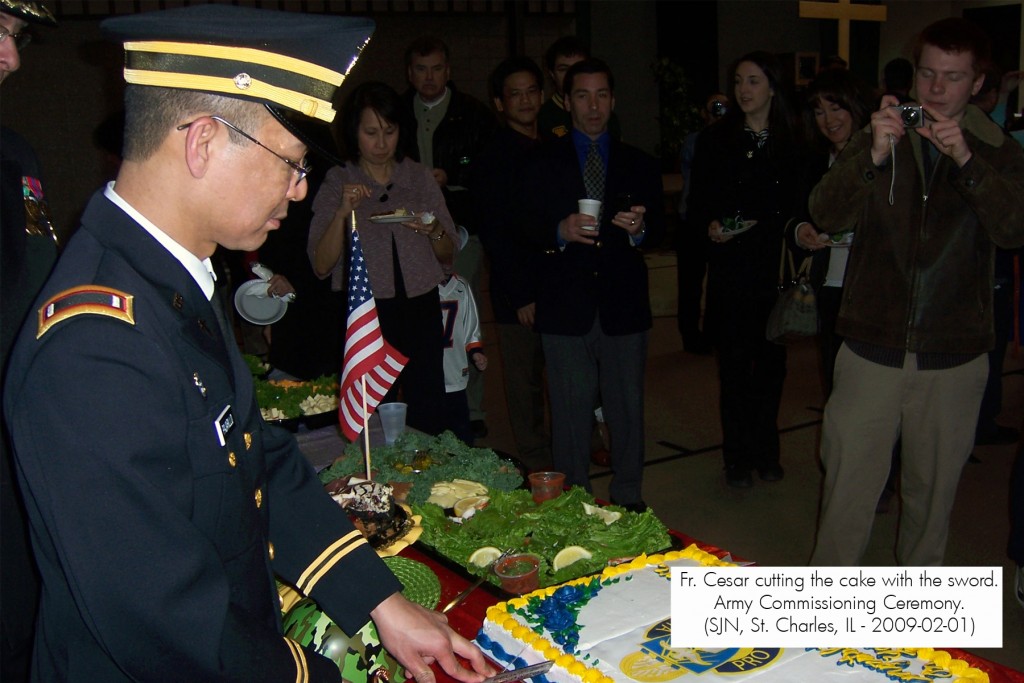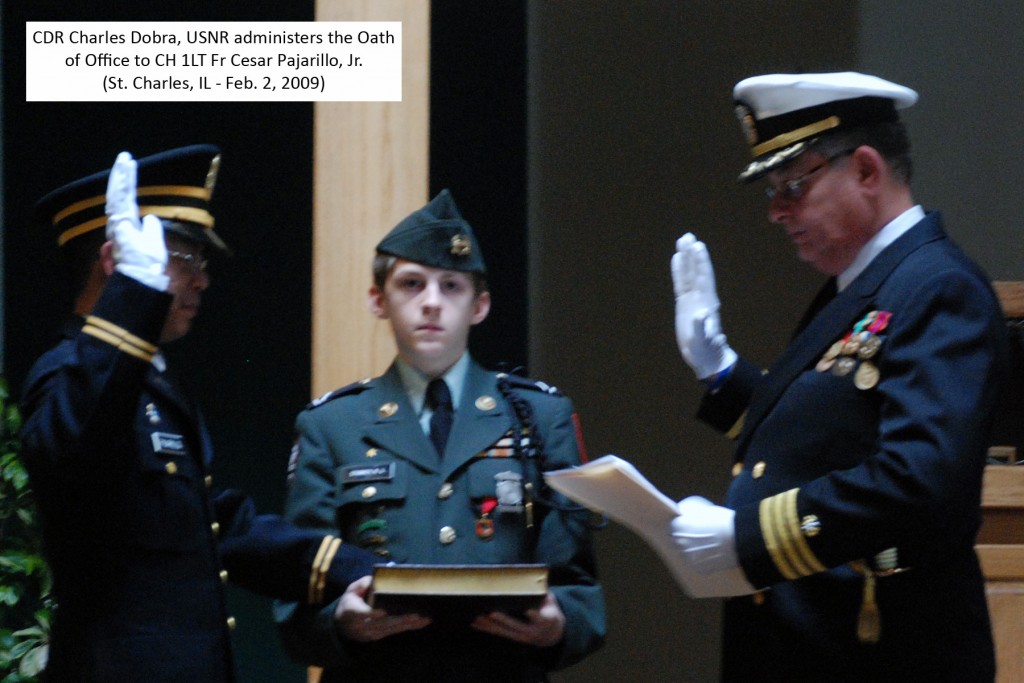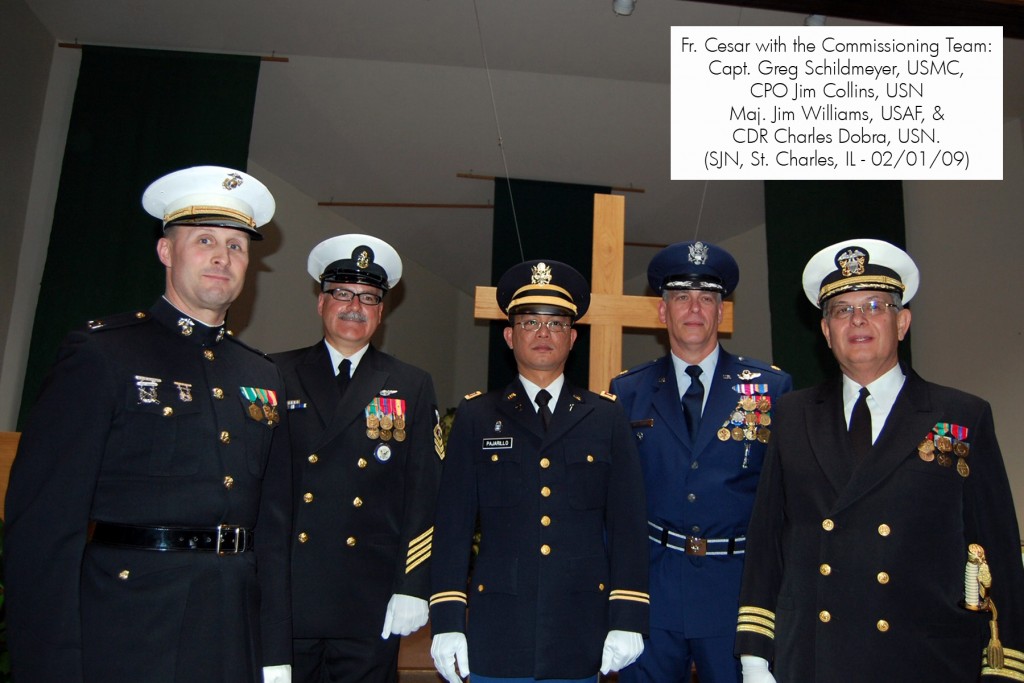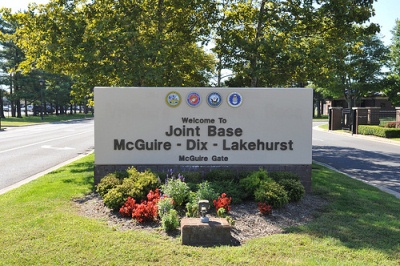I was commissioned as a First Lieutenant (Reserves) in the US Army Chaplain Corps during a solemn ceremony presided by my good friend, Commander Charles Dobra (JAGC) USN, with the assistance of my other military friends Major James Williams USAF, Captain Greg Schildmeyer USMC, and Chief Petty Officer Jim Collins USN. The ceremony was conducted at the Family Center of Saint John Neumann Parish in Saint Charles, Illinois and witnessed by around 300 friends and parishioners.
Category Archives: Initial Entry
Fort Dix Interview
Applying as a chaplain in the US Army is a very laborious work and entailed a lot of paperwork, too. I’ve have submitted all the requirements but it will take maybe a year or so (from December 2007) for the application to be approved.
I flew in to New Jersey yesterday for today’s event which was MEPS (Military Entrance Processing Service) and an interview with a senior chaplain (a full-bird Colonel and Rabbi).
The USAREC put me up at Crown Plaza, where an entire floor was reserved just for applicants (the basic recruits share a room, the officers have their own room). There I met two other Roman Catholic priests (a Filipino and a Nigerian) who were also applying for direct commission as army chaplains.
We were roused from our sleep at 0300H, got bused to Fort Dix at 0400H, and started the whole MEPS process at 0500H. The MEPS process involved various paper-based and computer-based tests, as well as blood draws, urine sampling, agility exercises, and physical examination by a military/contracted physician. I was done by 1100H. With my recruiting NCO, we waited until the other two priests were done, and headed off to lunch.
At 1300H, all four of us (three priests and the NCO) headed off to the main post chapel to meet the garrison chaplain. He gave me a tour of the chapel area and introduced me to his staff. In the chapel, we met one of his assistants (another Jewish person) who upon knowing that I was a Roman Catholic priest, jokingly said that the “Blessed Mother assaulted [him] for locking her up in the closet” (it turned out, he was taking something from the closet and a statue of the BVM fell over on him)! They were a hilarious bunch and I believe they liked the jobs they were doing in the army and were having a lot of fun working with each other and with their army congregation. It was a heartwarming experience to see the UMT working together and liking each other!
The First Filipino Catholic US Army Chaplain
My grand-uncle, Monsignor Pedro Pajarillo of the Roman Catholic Archdiocese of Manila, made history in 1932 when he was commissioned as a First Lieutenant in the US Army. At the time there were no Filipino Catholic priests serving in any of the US armed services.
Because of the distance between the Philippines and the US Army Chaplain School (the school at that time was deactivated and closed for resident training), he was given permission to finish his chaplain training by correspondence medicine school (before the advent of internet, correspondence school meant sending and receiving lessons by old fashioned envelopes and stamps). After initial chaplain training, he was assigned with the 45th Infantry (Philippine Scouts) based in Fort William McKinley in Manila (present day Fort Bonifacio).
For a short history of the US Army Chaplain School, please click here.

Chaplain (MAJ) William Arnold (left), Division Chaplain, with Chaplain (1LT) Pedro Pajarillo, during Annual Training of the 45th Infantry – Philippine Scouts at Fort William McKinley, Manila. (November 1932). Chaplain Arnold rose to the rank of Major General and became the 5th Chief of Chaplains of the US Army (1935) and Military Delegate (Bishop) to the US Armed Services (1945).
The Journey Begins
The thought of becoming a military chaplain first crossed my mind during my last year in the Seminary (Mount Saint Mary’s Seminary, Emmitsburg, MD). Every so often, chaplain recruiters from different branches of service would stop by and have a chat with the guys. For some reason they never show up all at the same time; I thought it might be a chaplaincy policy or something. There were also some seminarians who had served previously, either as enlisted or officers, in the different services who have given favorable impressions of the chaplains they’ve encountered in the field. I had the impression that chaplains are in general, well-respected by the soldiers regardless of what religious denomination they represent.
I was ordained as a deacon at St. Joseph Catholic Church in Emmitsburg, MD on November 9, 2002, and then as a priest at St. Peter’s Cathedral in Rockford, IL on May 17, 2003. In between those dates, I was an intern at Holy Angels Church in Aurora, IL, while the rest of my classmates were finishing up their theology degree at the Mount. I came to the Mount with a graduate degree in theology from the Pontificia Universitas Urbaniana (Propaganda Fidei) in Rome, so I was dispensed from many of the classes, including the last semester of fourth year theology.
Before our ordination to the priesthood, all 11 of us in the Ordination Class of 2003 were interviewed by the Vicar for Clergy, who will become our immediate boss upon ordination. I manifested to him my desire to enter the chaplains’ program… he told me to wait a few years and then talk to him about it. So I waited until I was done with our diocese’s five-year “Junior Clergy Program” (probably similar to what the chaplains-in-training at Ft. Jackson call “death-by-powerpoint”).
And so, sometime in June 2007, I contacted the Army Chaplaincy and asked for more information about the program. I also did some research on the Army Chaplaincy’s website and contacted some of the chaplains whose blogs I found on the net (those were Godsent). Fr (CPT) John L (US Army Chaplain Recruiter for Catholics) and SFC Dan C (Station Cmdr) were very helpful in guiding me through the process.
For Catholic priests, entrance into the military chaplaincy is a two-fold process: application to the branch of service, and application to the AMS (Archdiocese of Military Services) for the necessary endorsement. These two applications are separate from each other, and ideally should be done simultaneously since completing the paperwork could take some time. From my experience, the military, at least the Army, is much quicker compared to the AMS. One Catholic Chaplain joked that the AMS endorsing department is composed of “an elderly lady and a typewriter.” The AMS, as the only Roman Catholic endorsing agency for the military, must be swamped with endorsement applications. One important note for Catholic priests: you must have your own ordinary’s permission in writing, without any restrictions, before the AMS could endorse you.
To be continued…





